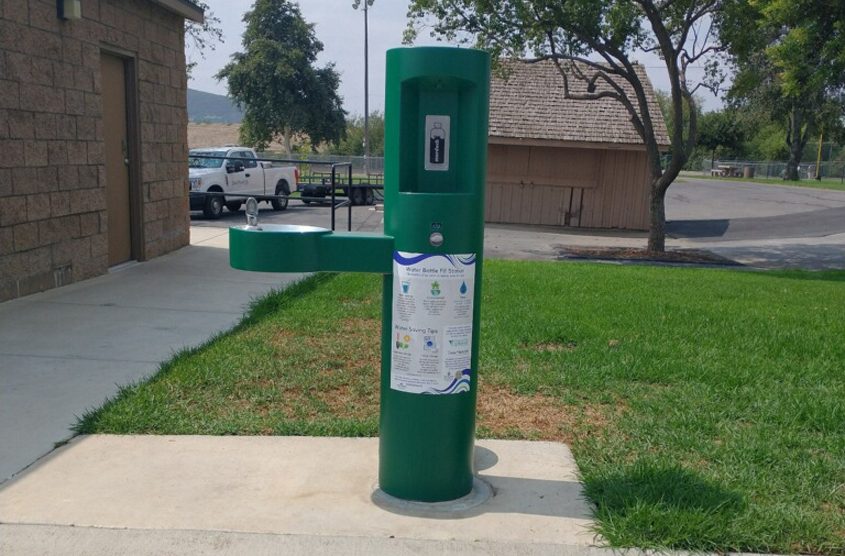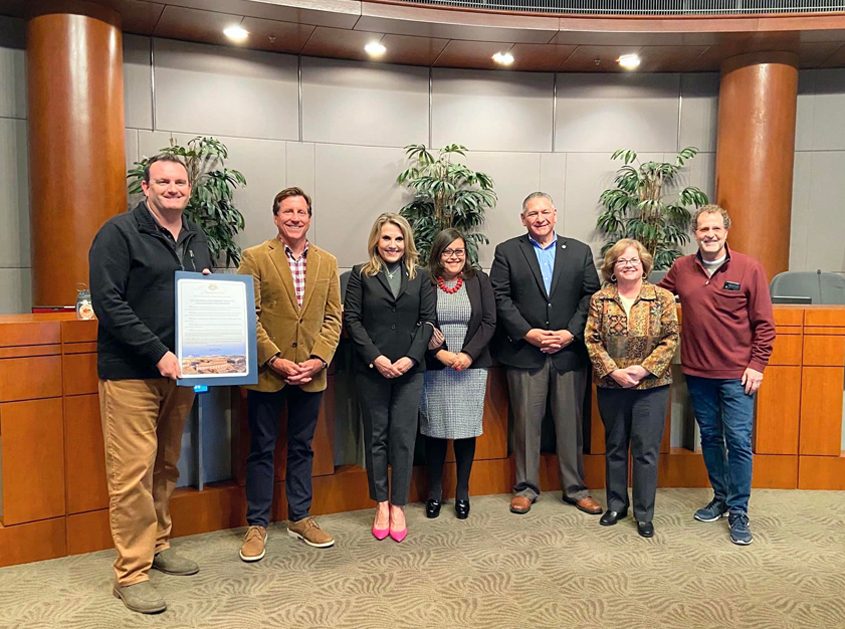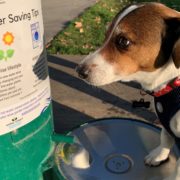The City of San Marcos and the Vallecitos Water District partnered on a new project with funding from the San Diego County Water Authority and Metropolitan Water District of Southern California to encourage water conservation and reduce the use of plastic.
Five hydration stations have been installed in San Marcos parks to encourage the use of refilling reusable bottles during outdoor activities instead of using purchased bottled water. Both the City of San Marcos and the Vallecitos Water District are committed to reducing single-use plastics.

The new hydration stations help conserve water and avoid the production of single-use plastic bottles. Photo: Vallecitos Water District
The hydration station project received $25,000 in grant funding from the Water Authority and MWD to cover the purchase and installation of the stations and educational signage informing the public about the benefits of tap water over bottled water. The signage also offers several additional steps people can take to conserve water.
New stations encourage reusable water bottle use
“Adding hydration stations throughout the community has been a longtime goal for Vallecitos and is a step in the right direction to increase access to clean drinking water and reduce single-use plastic waste for environmental sustainability,” said Vallecitos board member Mike Sannella. Sannella accepted a proclamation from the City of San Marcos commemorating the partnership, making this project possible.

(L to R): Vallecitos Water District Board President Mike Sannella, San Marcos City Councilmember Randy Walton, Mayor Rebecca Jones, Councilmembers Maria Nunez, Ed Musgrove, Sharon Jenkins, and Vallecitos Water District Board Jim Pennock. Photo: Vallecitos Water District
Each of the five new hydration stations features a quick-fill mechanism to encourage reusable water bottle use, a regular water fountain spout, and a dog bowl. Vallecitos worked with the City of San Marcos’ Public Works Department to install hydration stations at Mission Sports Field Park, Woodland Park, Bradley Park, Connors Park, and Buelow Park.
Bottled water is a wasteful convenience. According to the Water Footprint Calculator, it takes 1.5 gallons of water to manufacture a single plastic bottle holding 16 ounces of drinking water. All plastic drinking bottles are made from new plastic material, so there is no recovery due to recycling.
(Editor’s note: The Vallecitos Water District is one of the San Diego County Water Authority’s 24 member agencies that deliver water across the metropolitan San Diego region.)





